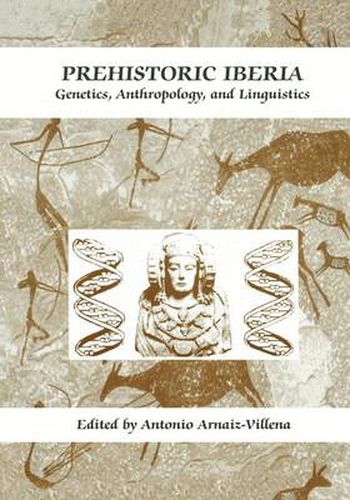Readings Newsletter
Become a Readings Member to make your shopping experience even easier.
Sign in or sign up for free!
You’re not far away from qualifying for FREE standard shipping within Australia
You’ve qualified for FREE standard shipping within Australia
The cart is loading…






This title is printed to order. This book may have been self-published. If so, we cannot guarantee the quality of the content. In the main most books will have gone through the editing process however some may not. We therefore suggest that you be aware of this before ordering this book. If in doubt check either the author or publisher’s details as we are unable to accept any returns unless they are faulty. Please contact us if you have any questions.
This work contains most of the conclusions reached by the geneticists, anthropologists, and linguists at the meeting “Prehistoric Iberia’. The novel conclusions reached include the following: there is no evidence of the demic diffusion model of people substitution in Iberia during the Mesolithic-Neolithic transition; new technologies were probably reached by circum-Mediterranean navigation; present day Iberians are genetically very similar to North African populations and also to other more distant Eastern Mediterraneans, including Turks; Arab invasions in North Africa and Spain in 711 AD did not result in a massive gene flow; North African Berbers and Spaniards have maintained their old genetic identity - this invasion was mostly religious and cultural; Celts in Iberia are difficult to find; and Basque and Berber languages are similar to many other extinct "Usko-Mediterranean’ languages (Etruscan, Minoan). These "older languages’ were later substituted by the Euro Asiatic languages (Latin, Greek, German). Finally, the Saharan area is considered as a radiation focus of peoples, (and languages) who were forced to emigrate from a fertile area where hyper-arid conditions began to develop after 7000 BC.
$9.00 standard shipping within Australia
FREE standard shipping within Australia for orders over $100.00
Express & International shipping calculated at checkout
This title is printed to order. This book may have been self-published. If so, we cannot guarantee the quality of the content. In the main most books will have gone through the editing process however some may not. We therefore suggest that you be aware of this before ordering this book. If in doubt check either the author or publisher’s details as we are unable to accept any returns unless they are faulty. Please contact us if you have any questions.
This work contains most of the conclusions reached by the geneticists, anthropologists, and linguists at the meeting “Prehistoric Iberia’. The novel conclusions reached include the following: there is no evidence of the demic diffusion model of people substitution in Iberia during the Mesolithic-Neolithic transition; new technologies were probably reached by circum-Mediterranean navigation; present day Iberians are genetically very similar to North African populations and also to other more distant Eastern Mediterraneans, including Turks; Arab invasions in North Africa and Spain in 711 AD did not result in a massive gene flow; North African Berbers and Spaniards have maintained their old genetic identity - this invasion was mostly religious and cultural; Celts in Iberia are difficult to find; and Basque and Berber languages are similar to many other extinct "Usko-Mediterranean’ languages (Etruscan, Minoan). These "older languages’ were later substituted by the Euro Asiatic languages (Latin, Greek, German). Finally, the Saharan area is considered as a radiation focus of peoples, (and languages) who were forced to emigrate from a fertile area where hyper-arid conditions began to develop after 7000 BC.